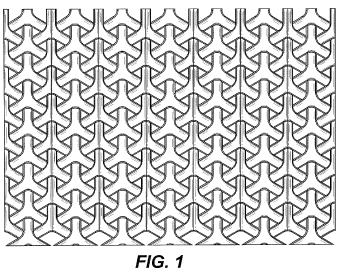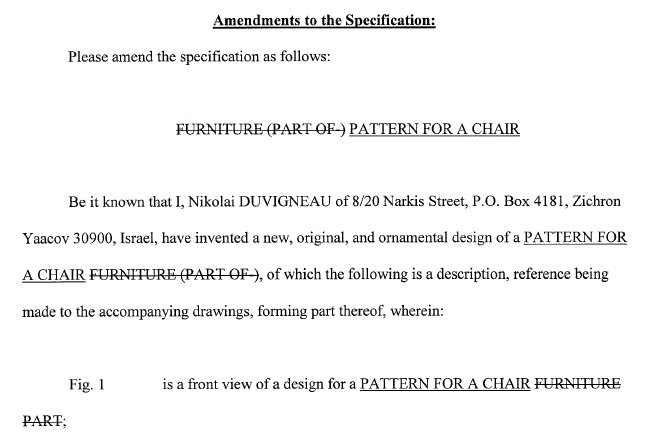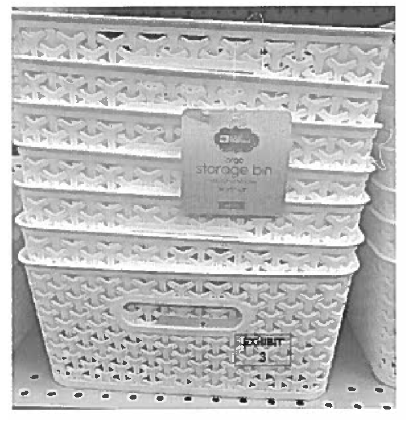DESIGN CLAIM IS LIMITED TO AN ARTICLE OF MANUFACTURE IDENTIFIED IN THE CLAIM
| November 8, 2021
In Re: Surgisil, L.L.P., Peter Raphael, Scott Harris
Decided on October 4, 2021
Moore (author), Newman, and O’Malley
Summary:
The Federal Circuit reversed the PTAB’s anticipation decision on a claim of SurgiSil’s ’550 application because a design claim should be limited to an article of manufacture identified in the claim. The Federal Circuit held that since the claim in the ’550 application identified a lip implant, the claim is limited to lip implants and does not cover other article of manufacture. The CAFC held that since the Blick reference discloses an art tool rather than a lip implant, the PTAB’s anticipation finding is not correct.
Details:
The ’550 application
SurgiSil’s ’550 application claims an ornamental design for a lip implant[1] as shown below:

The examiner rejected a claim of the ’550 application as being anticipated by Blick, which discloses an art tool called stump as shown below:

The PTAB
The PTAB affirmed the examiner’s decision and found that the differences between the claimed design in the ’550 application and Blick are minor.
The PTAB rejected SurgiSil’s argument that Blick discloses a “very different” article of manufacture than a lip implant reasoning that “it is appropriate to ignore the identification of manufacture in the claim language” and “whether a reference is analogous art is irrelevant to whether that reference anticipates.”
The Federal Circuit
The CAFC reviewed the PTAB’s legal conclusion that the article of manufacture identified in the claims is not limiting de novo. The CAFC ultimately held that the PTAB erred as a matter of law.
By citing 35 U.S.C. §171(a) (“Whoever invents any new, original and ornamental design for an article of manufacture may obtain a patent therefor, subject to the conditions and requirements of this title.”), the CAFC held that a design claim is limited to the article of manufacture identified in the claim.
The CAFC also cited a case called Curver Luxembourg, SARL v. Home Expressions Inc., 938 F.3d 1334, 1336 (Fed. Cir. 2019)[2] and the MPEP to hold that the claim at issue should be limited to the particular article of manufacture identified in the claim.
The CAFC held that since the claim identified a lip implant, the claim is limited to lip implants and does not cover other article of manufacture.
The CAFC held that since Blick discloses an art tool rather than a lip implant, the PTAB’s anticipation finding is not correct.
Therefore, the CAFC reversed the PTAB’s decision.
Takeaway:
- It would certainly be easier to obtain design patents going forward. Can Applicant obtain design patents by using a known design in the art and applying to a new article of manufacture?
- It would be difficult to invalidate design patents because prior arts from a different article of manufacture could not be used to invalidate them.
- Applicant should be careful to amend a title/claim and provide any description on title/terms in the claim in a design application because they could be used to construe an article of manufacture and to clarify the scope of a design patent claim.
- It may be difficult to enforce the design patent for a certain article of manufacture (i.e., “lip implant”) against a different article of manufacture (“art stump”).
[1] Website for SurgiSil: SurgiSil’s silicone lip implants are an alternative to “repetitive, costly, and painful filler injections,” but that they can be removed at any time.
[2] In this case, the CAFC held that a particular claim was limited to a wicker pattern applied to an article of manufacture recited in the claim (chair) and did not cover the use of the same pattern on another non-claimed article (i.e., basket).
WHEN FIGURES IN A DESIGN PATENT DO NOT CLEARLY SHOW AN ARTICLE OF MANUFACTURE FOR THE ORNAMENTAL DESIGN, THE TITLE AND CLAIM LANGUAGE CAN LIMIT THE SCOPE OF THE DESIGN PATENT
| October 7, 2019
Curver Luxembourg, SARL, v. Home Expressions Inc.
September 12, 2019
Chen (author), Hughes, and Stoll
Summary:
The Federal Circuit affirmed the district court’s grant of a defendant’s motion to dismiss a complaint for failure to state a plausible claim of design patent infringement because when all of the drawings in a design patent at issue do not describe an article of manufacture for the ornamental design, the title, claim language, figure descriptions specifying an article of manufacture, which was amended during the prosecution of the patent based on the Examiner’s proposed amendment, can limit the scope of a design patent.
Details:
The ‘946 Patent
Curver Luxembourg, SARL (Curver) is the assignee of U.S. Design Patent No. D677,946 (‘946 patent) with a title “Pattern for a Chair” and claiming an “ornamental design for a pattern for a chair.” The ‘946 patent claims an overlapping “Y” design, as shown below. However, none of the figures illustrate a design being applied to a chair.

Prosecution
Curver originally applied for a patent directed to a pattern for “furniture,” and the original title was “FURNITURE (PART OF-).” The original claim recited a “design for a furniture part.”
However, during the prosecution, the Examiner allowed the claim but objected to the title because it was too vague to constitute an article of manufacture (in Ex Parte Quayle Action). The Examiner suggested amending the title to read “Pattern for a Chair,” and Curver accepted the Examiner’s suggestion by replacing the title with “Pattern for a Chair” and amending the claim term “furniture part” with “pattern for a chair.” Curver did not amend the figures to illustrate a chair. The Examiner accepted Curver’s amendments and allowed the application.


District Court
Home Expressions makes and sells baskets with a similar overlapping “Y” design disclosed in the ‘946 patent.
Curver sued Home Expressions accusing its basket products of infringing the ‘946 patent. Home Expressions filed a motion to discuss Curver’s complaint under Rule 12(b)(6) for failing to set forth a plausible claim of infringement.

Using a two-step analysis, the district court construed the scope of the ‘946 patent to be limited to the design pattern illustrated in the figures as applied to a chair and found that an ordinary observer would not purchase Home Expressions’s basket with “Y” design believing that the purchase was for “Y” design applied to a chair.
Therefore, the district court granted the Rule 12(b)(6) motion.
CAFC
The CAFC held that to define the scope of a design patent, the court traditionally focused on the figures illustrated in the patent. However, when all of the drawings fail to describe an article of manufacture for the ornamental design, the CAFC held that claim language specifying an article of manufacture can limit the scope of a design patent.
In addition, the CAFC uses §1.153(a) to held that “the design be tied to a particular article, but this regulation permits claim language, not just illustration along, to identify that article.”
The title of the design must designate the particular article. No description, other than a reference to the drawing, is ordinarily required. The claim shall be in formal terms to the ornamental design for the article (specifying name) as shown, or as shown and described.
The CAFC held that the prosecution history shows that Curver amended the title, claim, figure descriptions to recite “pattern for a chair” in order to satisfy the article of manufacture requirement necessary to secure its design patent. Therefore, the CAFC held that the scope of the ‘946 patent should be limited by those amendments.
Therefore, the CAFC affirmed the district court’s grant of Home Expressions’s motion to dismiss the complaint for failure to state a plausible claim of design patent infringement.
Takeaway:
- When figures in a design patent do not clearly show an article of manufacture for the ornamental design, the title and claim language can limit the scope of the design patent.
- Applicant should review the Examiner’s proposed amendments carefully before placing the application in condition for allowance.
- Applicant should be careful when crafting the title and claim language.
Tags: article of manufacture > claim > Design Patent > figure > patent infringement > title


